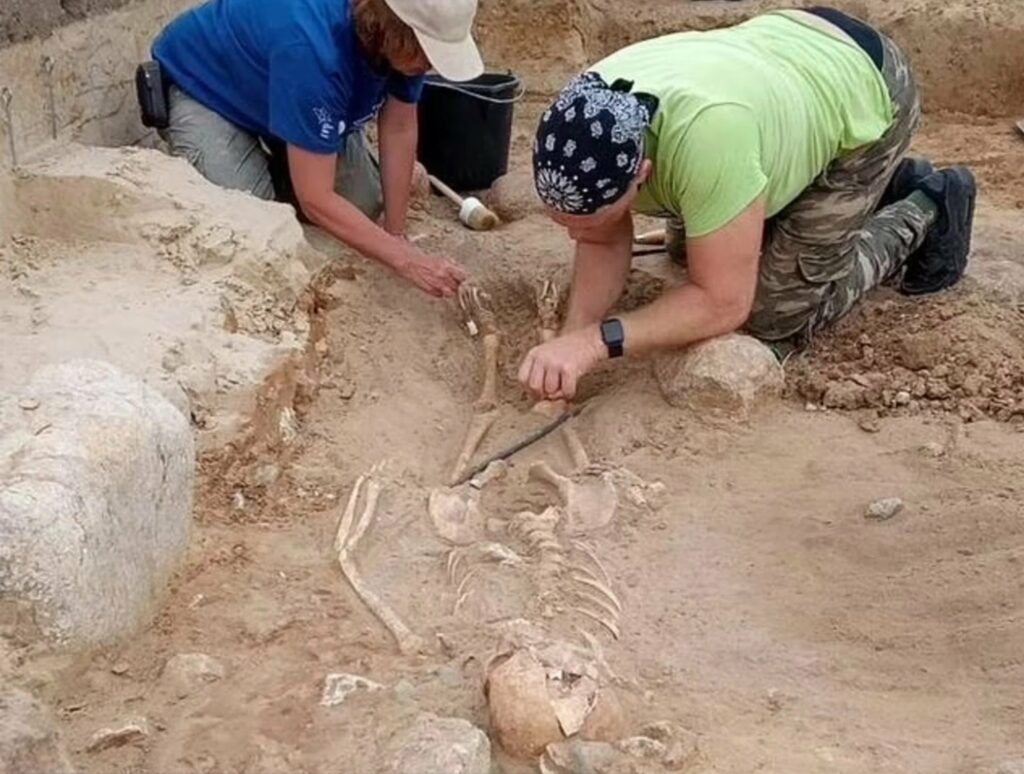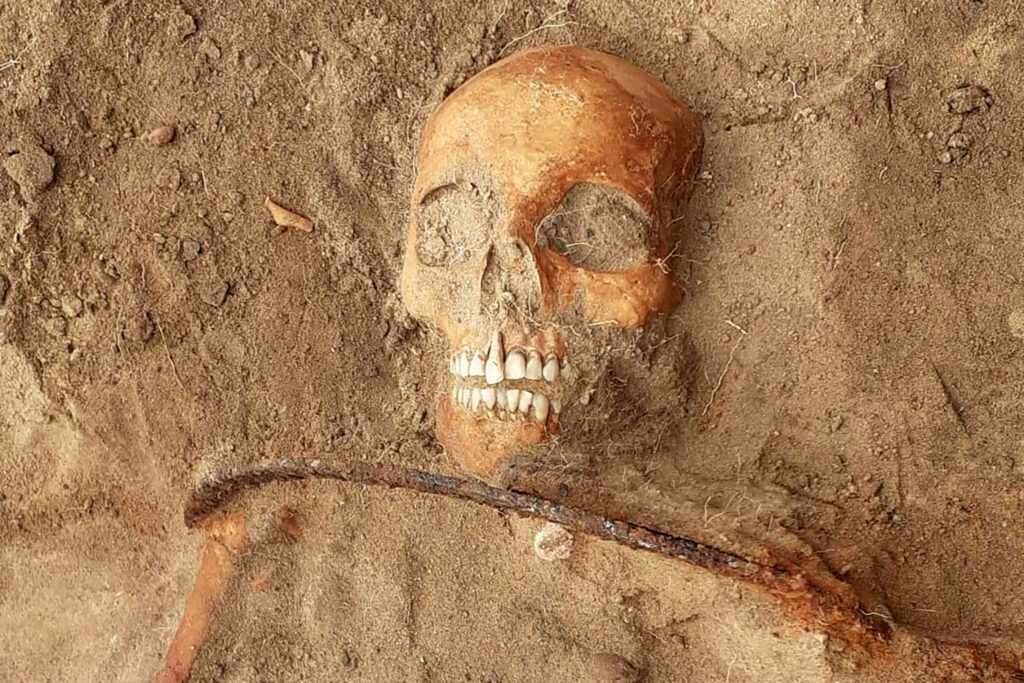In the village of Pień, Poland, archaeologists have made a chilling discovery – the 400-year-old remains of a child, believed to be a boy around six or seven years old, buried in a locked grave. The unusual burial points to the 16th and 17th-century fears that the deceased was a vampire-like monster.

Unique Burial Practices
The boy’s remains were found in an unmarked mass cemetery, with the child originally buried in an upright position, face down, and a triangular iron padlock folded under his feet. According to Dariusz Polinski, the archaeologist leading the dig, the padlock was a safeguard against the dead child, not a measure to protect the boy’s remains.
Other Safeguards Found

In addition to the padlocked grave, other safeguards were discovered at the cemetery, including:
- Sickles
- Coins or stones placed in the mouths of the buried
These practices were believed to prevent the dead from transforming into demons or creatures like vampires if they did not die a “good death.”
Possible Reasons for the Unusual Burial

Polinski suggested several reasons why the boy may have been buried in this manner:
- Physical defects that caused people to fear him when he was alive
- Death from the plague
- Suicide
Historical Context
The 16th and 17th centuries in Poland were marked by difficult times, including:
- The Swedish Deluge
- Fighting with the Cossacks
- Epidemics
- Economic crisis
- Counter-reformation
These living conditions led to a rise in belief in demonic beings and the search for scapegoats, such as “witches.”
Similar Discovery Nearby
Last year, the team found the body of a woman in a similarly padlocked tomb just six feet away from the child’s grave. The woman was described as a “vampire” and found with a green tarnish on her palate. A jaw fragment partially stained green was also found in the cluster above the child’s grave.

These discoveries in Pień bear traces of anti-demonic or anti-vampiric practices, fitting into the general picture of fear of the unknown and attempts to find a culprit to blame for failures and tragedies during those turbulent times.

